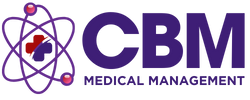Employee Assistance Programs (EAPs) are invaluable in promoting workplace wellness, particularly concerning mental health support. In a world where mental health awareness is more critical than ever, ensuring that mental health professionals are efficiently credentialed through EAPs can enhance accessibility and effectiveness of these essential services. With insights backed by CBM Medical Management, boasting 40 years of experience in Revenue Cycle Management and Practice Start-up, this article explores how mental health professionals can maximize EAP programs for credentialing.
Understanding EAPs and Their Importance in Mental Health Credentialing
What exactly are Employee Assistance Programs (EAPs), and why are they pivotal in the context of mental health credentialing? EAPs are work-based intervention programs designed to identify and assist employees in resolving personal problems that may affect their job performance and well-being. These programs extend beyond mere job-related issues, addressing a variety of life challenges, including mental health concerns.
Mental health providers participating in EAPs need to be credentialed, a process that reassures the program administrators and the participating employees about the provider’s qualifications, expertise, and reliability. Efficient credentialing through EAPs not only fosters trust but also ensures that the intervention provided to employees is of the highest standard.
Steps to Optimize Credentialing in EAPs
How can mental health providers streamline their credentialing process in EAPs? Here’s a concise guide:
- Understand the Requirements: Each EAP has its own set of credentialing criteria which can include certifications, license information, and proof of experience. Familiarizing oneself with these requirements is the first step towards seamless integration into an EAP.
- Maintain Detailed Records: Keeping comprehensive and organized records of all professional qualifications and continuing education courses is crucial. This not only expedites the credentialing process but also helps in maintaining professionalism and readiness for audits.
- Regular Updates: Credentialing is not a one-time process. Providers need to update their profiles regularly to reflect any new qualifications or changes in their licensing status, ensuring compliance with EAP standards.
- Leverage Professional Help: Sometimes, navigating the intricacies of EAP requirements can be challenging. Utilizing credentialing services can help streamline the process, allowing mental health providers to focus on their primary goal of helping clients.
Benefits of Effective Credentialing in EAPs
EAP credentialing offers numerous benefits that ultimately enhance the quality and accessibility of mental health services:
- Enhanced Trust and Credibility: Credentialing serves as a badge of legitimacy and proficiency that builds trust among employers, employees, and insurance providers.
- Better Service Delivery: When EAPs are staffed with fully credentialed providers, it ensures that the services delivered are performed by qualified professionals, thereby increasing the efficacy of the assistance offered.
- Increased Reach: Being part of an EAP expands a mental health professional’s potential client base significantly. It opens up avenues to assist employees who might not otherwise seek help.
Effective utilization of EAPs in mental health credentialing not only strengthens the support system available to employees but also enhances the professional standards and service delivery of mental health providers. Are you ready to enhance your practice’s reach and impact through reliable credentialing? Engage with CBM Medical Management, and take your professional practice to the next level with streamlined operations and optimized credential services.
Remember, in the realm of mental health, the quality of care is paramount, and ensuring the adherence to credentialing standards through EAPs is a significant step towards achieving that excellence.


